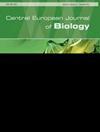Scape, Rhizome and Root Anatomy of Polygonatum Species from Turkey
引用次数: 0
Abstract
Objective: Polygonatum (Asparagaceae) is a rhizomatous monocotyledon genus that is distributed in the temperate regions of the Northern Hemisphere. The genus is represented by 5 species in Turkey (P. glaberrimum, P. latifolium, P. multiflorum, P. verticillatum and P. orientale). Karyological, palynological, phylogenic, chemotaxonomical and some anatomical studies of Polygonatum species have been carried out previously. However, the detailed anatomical features of the scape, rhizome and root of Polygonatum species grown in Turkey have not been examined before and so the aim of this study is to determine their anatomical characteristics. Also, the study compares the species with each other according to obtained anatomical characteristics and comparing them with previous anatomical studies. Materials and Methods: Investigations were carried out on fresh material collected from wild habitats during July 20092012 in Turkey. Cross-sections of scape, rhizome and roots were cut by hand, detailed photographs were taken under a light microscope, and anatomical structures were drawn in detail with an isograph pen. Results: The anatomical structures of Polygonatum species have monocotyledones features. Significant differences between species were observed, such as the number of costas in the scape, number of xylem arms in the root and the types of vascular bundle in the rhizome. Also, the anatomical characteristics of the species were compared with previous anatomical studies. Conclusion: The anatomical features determined by this study will be useful at the species level as well as at the genus and family level. Hence the obtained data will contribute to the literature.土耳其黄精属植物的茎、茎和根解剖
目的:黄精属(天门冬科)是分布于北半球温带地区的根状单子叶属植物。该属在土耳其有5种代表,分别为光蒿、大叶蒿、多花蒿、verticillatum和东方蒿。黄精属植物的核学、孢粉学、系统发育学、化学分类学和一些解剖学研究已经开展。然而,在土耳其种植的黄精品种的景观,根茎和根的详细解剖特征尚未被检查,因此本研究的目的是确定其解剖特征。此外,本研究还根据所获得的解剖特征对物种进行了比较,并将其与以往的解剖研究进行了比较。材料与方法:2009年7月至2012年7月在土耳其野外生境采集新鲜标本进行调查。用手切开植物的横切面、根茎和根,在光镜下拍摄详细的照片,用等值线笔详细绘制解剖结构。结果:黄精属植物解剖结构具有单子叶酮特征。不同种间的花萼数、根部木质部臂数和根状茎维管束类型均存在显著差异。并将其解剖特征与以往的解剖研究结果进行了比较。结论:本研究确定的解剖特征在种、属、科水平上具有一定的应用价值。因此,获得的数据将有助于文献。
本文章由计算机程序翻译,如有差异,请以英文原文为准。
求助全文
约1分钟内获得全文
求助全文

 求助内容:
求助内容: 应助结果提醒方式:
应助结果提醒方式:


